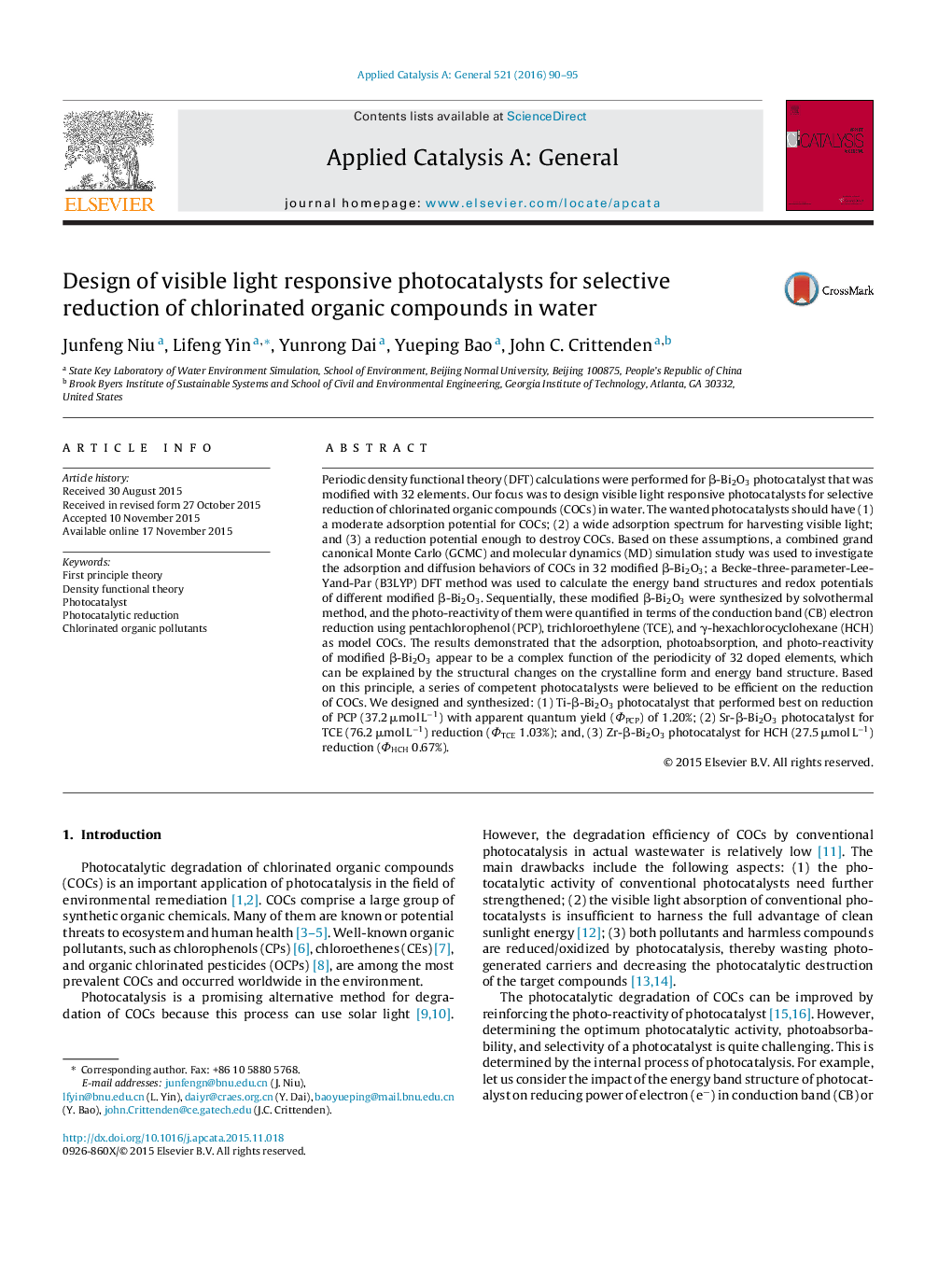| کد مقاله | کد نشریه | سال انتشار | مقاله انگلیسی | نسخه تمام متن |
|---|---|---|---|---|
| 38796 | 45791 | 2016 | 6 صفحه PDF | دانلود رایگان |
• DFT calculation was performed for β-Bi2O3 photocatalyst modified with 32 elements.
• Photocatalysts good at COCs reduction were designed by theoretical calculation.
• Periodic change of photocatalyst feature is from the periodicity of doped elements.
Periodic density functional theory (DFT) calculations were performed for β-Bi2O3 photocatalyst that was modified with 32 elements. Our focus was to design visible light responsive photocatalysts for selective reduction of chlorinated organic compounds (COCs) in water. The wanted photocatalysts should have (1) a moderate adsorption potential for COCs; (2) a wide adsorption spectrum for harvesting visible light; and (3) a reduction potential enough to destroy COCs. Based on these assumptions, a combined grand canonical Monte Carlo (GCMC) and molecular dynamics (MD) simulation study was used to investigate the adsorption and diffusion behaviors of COCs in 32 modified β-Bi2O3; a Becke-three-parameter-Lee-Yand-Par (B3LYP) DFT method was used to calculate the energy band structures and redox potentials of different modified β-Bi2O3. Sequentially, these modified β-Bi2O3 were synthesized by solvothermal method, and the photo-reactivity of them were quantified in terms of the conduction band (CB) electron reduction using pentachlorophenol (PCP), trichloroethylene (TCE), and γ-hexachlorocyclohexane (HCH) as model COCs. The results demonstrated that the adsorption, photoabsorption, and photo-reactivity of modified β-Bi2O3 appear to be a complex function of the periodicity of 32 doped elements, which can be explained by the structural changes on the crystalline form and energy band structure. Based on this principle, a series of competent photocatalysts were believed to be efficient on the reduction of COCs. We designed and synthesized: (1) Ti-β-Bi2O3 photocatalyst that performed best on reduction of PCP (37.2 μmol L−1) with apparent quantum yield (ΦPCP) of 1.20%; (2) Sr-β-Bi2O3 photocatalyst for TCE (76.2 μmol L−1) reduction (ΦTCE 1.03%); and, (3) Zr-β-Bi2O3 photocatalyst for HCH (27.5 μmol L−1) reduction (ΦHCH 0.67%).
Figure optionsDownload high-quality image (202 K)Download as PowerPoint slide
Journal: Applied Catalysis A: General - Volume 521, 5 July 2016, Pages 90–95
